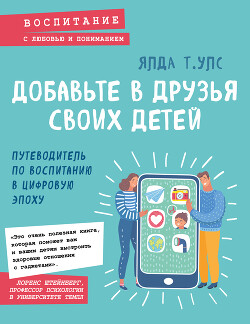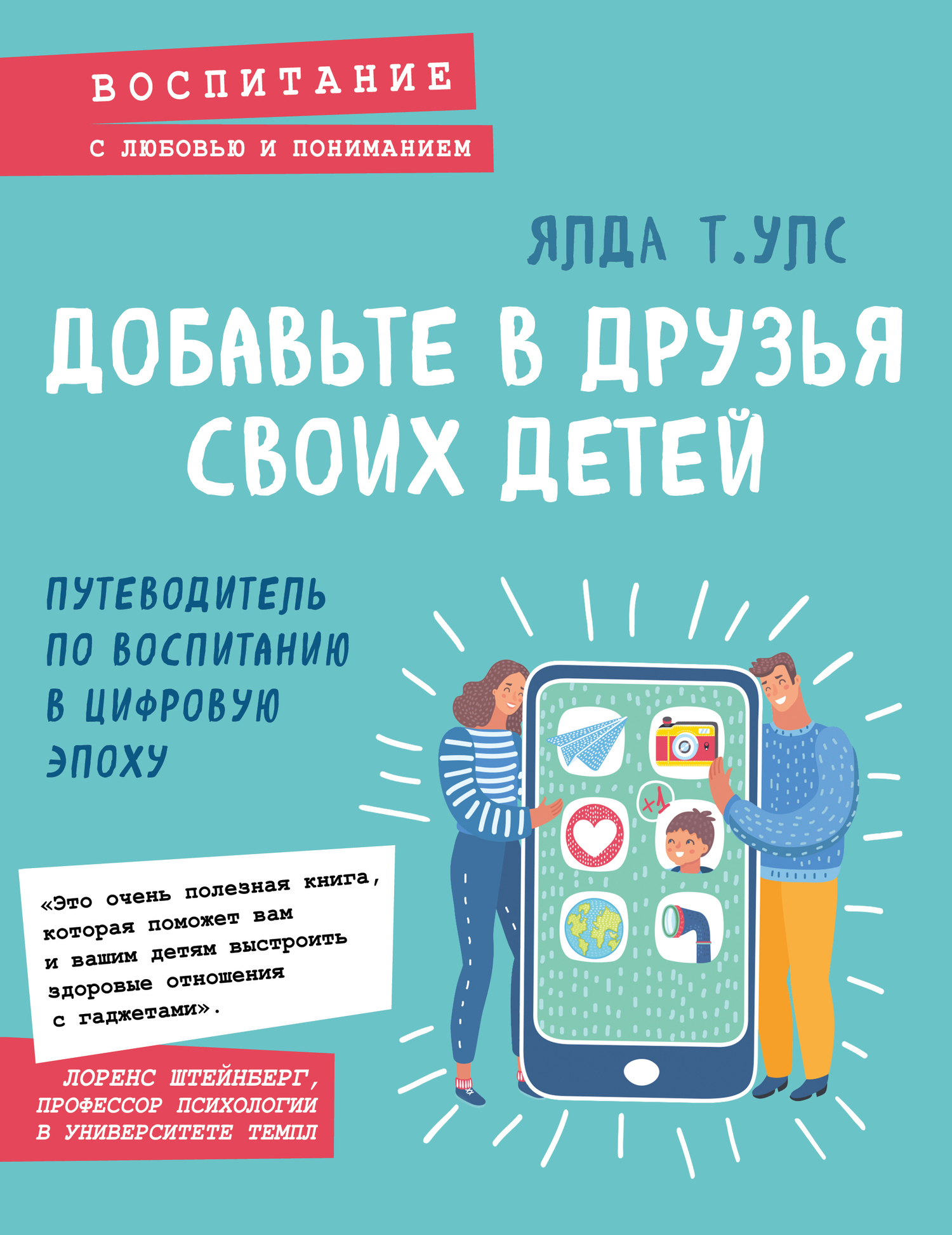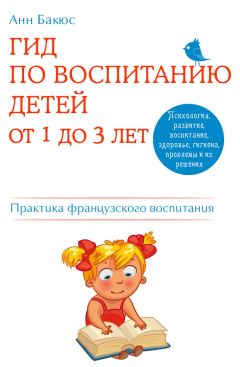20. C. Steiner-Adair, The Big Disconnect: Protecting Childhood and Family Relationships in the Digital Age (New York: HarperCollins, 2013).
21. Parenting in the Age of Digital Technology: A National Survey (Northwestern University: Center on Media and Human Development, 2013).
22. “Intrusive Monitoring of Internet Use by Parents Actually Leads Adolescents to Increase Their Risky Online Behavior,” Science Daily, January 21, 2015, http://www.sciencedaily.com/releases/2015/01/150121093507.htm.
23. A. Duerager and S. Livingstone, “How Can Parents Support Children’s Internet Safety?,” EU Kids Online, February 2012, http://eprints.lse. ac.uk/42872/1/How%20can%20parents%20support%20children’s%20 internet%20safety(lsero).pdf.
24. J.J. Davies and D.A. Gentile, “Responses to Children’s Media Use in Families with and without Siblings: A Family Development Perspective,” Family Relations 61 (2012).
25. Havas Worldwide, “The New Dynamics of Family.”
Глава 2
1. M. Gentzkow and J.M. Shapiro, “Preschool Television Viewing and Adolescent Test Scores: Historical Evidence from the Coleman Study,” The Quarterly Journal of Economics (2008).
2. Policy Statement, Children, Adolescents, and the Media (American Academy of Pediatrics, 2013).
3. A. Bandura, D. Ross, and S. Ross, “Transmission of Aggression Through Imitation of Aggressive Models,” Journal of Abnormal and Social Psychology 63 (1961).
4. J. Watson, Behaviorism (New Brunswick, NJ: The People’s Institute Publishing Company, 1924).
5. O. Pascalis, M. de Haan, and C.A. Nelson, “Is Face Processing Species- Specific During the First Year of Life?,” Science 296 (2002).
6. C. Moore and P.J. Dunham, eds., Joint Attention: Its Origins and Role in Development (Erlbaum, 1995).
7. M.B. Robb, R.A. Richert, and E. Wartella, “Just a Talking Book? Word Learning from Watching Baby Videos,” British Journal of Developmental Psychology 27 (2009): 27-45.
8. F.J. Zimmerman, D. A. Christakis, and A.N. Meltzoff, “Associations Between Media Viewing and Language Development in Children Under Age 2 Years,” The Journal of Pediatrics 151 (2007).
9. Robb, Richert, and Wartella, “Just a Talking Book?”
10. P.K. Kuhl, F.M. Tsao, and H.M. Liu, “Foreign-Language Experience in Infancy: Effects of Short-Term Exposure and Social Interaction on Phonetic Learning,” Proceedings of the National Academy of Science 100 (2003): 9096-9101.
11. L. Guernsey, Screentime: How Electronic Media–from Baby Videos to Educational Software—Affects Your Child (New York: Basic Books, 2011).
12. G.L. Troseth and J.S. DeLoache, “The Medium Can Obscure the Message: Young Children’s Understanding of Video,” Child 69 (1998): 950-65.
13. H. Hayne, J. Herbert, and G. Simcock, “Imitation from Television by 24- and 30-Month-Olds,” Developmental Science 6 (2003): 254-61.
14. A.R. Lauricella et al., “Contingent Computer Interactions for Young Children’s Object Retrieval Success,” Journal of Applied Developmental Psychology 31 (2010): 362-69.
15. G.A. Strouse and G.L. Troseth, “Supporting Toddlers’ Transfer of Word Learning from Video,” Cognitive Development 30 (2014).
16. S. Roseberry et al., “Live Action: Can Young Children Learn Verbs from Video?,” Child Development 80 (2009).
17. S. Roseberry, K. Hirch-Pasek, and R.M. Golinkoff, “Skype Me! Socially Contingent Interactions Help Toddlers Learn Language,” Child Development 85 (2014).
18. Davies and Gentile, “Responses to Children’s Media Use in Families with and without Siblings: A Family Development Perspective.”
19. M.E. Schmidt et al., “Television Viewing in Infancy and Child Cognition at 3 Years of Age in a US Cohort,” Pediatrics 123 (2009).
Глава 3
1. Gary Turk, “Look Up, “ YouTube video, posted by Gary Turk, April 25, 2014, https://www.youtube.com/watch?v=Z7dLU6fk9QY.
2. Common Sense Media, Social Media, Social Life: How Teens View Their Digital Lives (Common Sense Media, 2012).
3. JWT Intelligence, “Gen Z: Digital in Their DNA,” April 2012, http:// www.jwtintelligence.com/wp-content/uploads/2012/04/F_INTERNAL _Gen_Z_0418122.pdf .
4. Cisco, “Cisco Visual Networking Index: Global Mobile Data Traffic Forecast Update 2014-2019 White Paper,” February 2015, http://www.cisco. com/c/en/us/solutions/collateral/service-provider/visual-networking -index-vni/white_paper_c11-520862.html.
5. Karl Fisch, and modified by Scott McLeod, Did You Know: Best of Shift Happens.”
6. E. Limer, “The First Text Message Was Sent 20 Years Ago Today,” Gizmodo, December 3, 2012, http://gizmodo.com/5965121/the-first-text-message -was-sent-20-years-ago-today.
7. Cisco, “Cisco Visual Networking Index: Global Mobile Data Traffic Forecast Update 2014-2019 White Paper.”
8. Kukil Bora, “Mobile App Store Annual Downloads to Reach 102 Billion in 2013; IOS, Android Stores to Account for 90% of Downloads by 2017,” International Business Times, September 19, 2013, http://www.ibtimes.com/ mobile-app-store-annual-downloads-reach-102-billion-2013-ios-android -stores-account-90-downloads.
9. M.A. Harrison and A.L. Gilmore, “U Txt WHEN? College Students’ Social Contexts of Text Messaging,” The Social Science Journal 49 (2012).
10. JWT Intelligence, “Gen Z: Digital in Their DNA,” April 2012, http:// www.jwtintelligence.com/wpcontent/uploads/2012/04/F_INTERNAL _Gen_Z_0418122.pdf.
11. Ibid.
12. N.B. Ellison, C. Steinfeld, and C. Lampe, “Connection Strategies: Social Capital Implications of Facebook-Enabled Communication Practices,” New Media & Society, (2010) 1-20.
13. D. Quinn, L. Chen, and M. Mulvenna, “Does Age Make a Difference in the Behavior of Online Social Network Users?,” IEEE International Conferences on Internet of Things, and Cyber, Political and Social Computing, 2011.
14. C.D. Firth and U. Firth, “Mechanisms of Social Cognition,” Annual Review of Psychology 63 (2012): 287-313.
15. S.J. Blakemore, “How Does the Brain Deal with the Social World?,” Neuro Report 14 (2003): 1-10.
16. L. Sproull and S. Kiesler, “Reducing Social Context Cues: Electronic Mail in Organizational Communication,” Management Science 32, no. 11 (1988): 1492-1512.
17. “Paul Ekman Group, Training,” 2015, http://www.paulekman.com/products/.
18. C. Izard et al., “Emotion Knowledge as a Predictor of Social Behavior and Academic Competence in Children at Risk,” Psychological Science 12 (2001): 352.
19. M.L. Knapp and J.A. Hall, Nonverbal Communication in Human Interaction, 7th ed. (Boston, MA: Wadsworth Cengage Learning, 2010).
20. Ibid.
21. Erdley and Asher, “A Social Goals Perspective on Children’s Social Competence,” Journal of Emotional and Behavioral Disorders 7, no. 156 (1999): 156-68.
22. J.R. Brown and J. Dunn, “Continuities in Emotion Understanding from Three to Six Years,” Child Development 67 (1996): 789-802.
23. Sproull and Kiesler, “Reducing Social Context Cues: Electronic Mail in Organizational Communication.”
24. Y.T. Uhls, “What Happens When Kids Go Cold Turkey from Their Screens for 5 Days?,” 2014, http://www.huffingtonpost.com/yalda-t-uhls/what-happens -when-kids-go-cold-turkey-from-their-screens-for-5-days_b_5700805 .html.
25. Y.T. Uhls et al., “Five Days at Outdoor Education Camp Without Screens Improves Preteen Skills with Nonverbal Emotion Cues,” Computers in Human Behavior, (2014).
26. S. Nowicki,Jr., “Manual for the Receptive Tests of the DANVA2,” 2010.
27. J. Magill-Evans et al., “The Child and Adolescent Social Perception Measure,” Journal of Nonverbal Behavior 19 (1995): 151.





